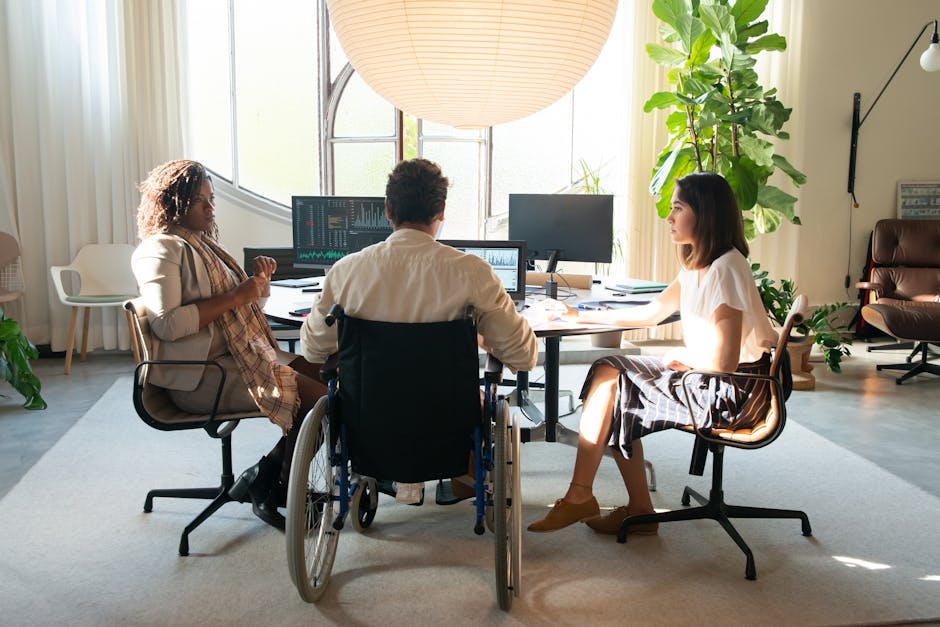Navigating the 4 Employee Types in Today's Diverse Workplaces
“In today's dynamic work environment, understanding the four main employee types is crucial for creating a productive and inclusive workplace. This article explores the characteristics of each type and provides insights on how to design workspaces that cater to their specific needs, ultimately leading to improved employee satisfaction and organizational success. ”

In the ever-evolving landscape of modern workplaces, organizations are faced with the challenge of accommodating a diverse range of employee types. Understanding these distinct categories is essential for creating an environment that fosters productivity, collaboration, and employee satisfaction. This article delves into the four primary employee types and explores how workplaces can be designed to support their unique needs.

The Four Employee Types
-
The Focused Worker: These employees thrive in quiet, distraction-free environments. They require dedicated spaces for deep concentration and individual work. To cater to their needs, workplaces should provide private offices, focus rooms, or designated quiet zones.
-
The Collaborator: Collaborators are energized by teamwork and thrive in open, interactive spaces. They benefit from collaborative areas such as meeting rooms, brainstorming zones, and informal gathering spots. Workplaces should prioritize flexible layouts that encourage spontaneous interactions and facilitate group work.
-
The Mobile Worker: With the rise of remote work and flexible schedules, mobile workers have become increasingly common. These employees require the ability to work from various locations, both within and outside the office. To support their needs, workplaces should invest in reliable technology infrastructure, provide hot-desking options, and create spaces that accommodate workplace foot traffic predictions.
-
The Social Butterfly: Social butterflies are the connectors of the workplace. They thrive on building relationships and fostering a sense of community. To support their needs, workplaces should incorporate social spaces such as cafes, lounges, and outdoor areas that encourage casual interactions and rebuilding workplace community.

Designing Workplaces for Diverse Employee Types
To create a workplace that supports the needs of all employee types, consider the following strategies:
-
Flexible Layouts: Implement modular furniture and movable walls to allow for easy reconfiguration of spaces. This adaptability enables employees to customize their environment based on their current tasks and preferences.
-
Zoning: Designate specific areas for different activities, such as focus work, collaboration, socialization, and relaxation. Clear zoning helps employees identify the appropriate space for their needs and minimizes distractions.
-
Technology Integration: Invest in robust technology infrastructure to support the needs of mobile workers and enable seamless collaboration across various locations. This includes reliable Wi-Fi, video conferencing capabilities, and secure remote access to company resources.
-
Biophilic Design: Incorporate natural elements such as plants, natural light, and organic materials into the workplace design. Biophilic elements have been shown to reduce stress, improve well-being, and enhance productivity for all employee types.

The Benefits of Catering to Diverse Employee Types
By designing workplaces that accommodate the needs of different employee types, organizations can reap numerous benefits:
-
Increased Productivity: When employees have access to spaces that align with their work styles and preferences, they are more likely to be engaged and productive.
-
Enhanced Collaboration: Providing spaces that facilitate collaboration and interaction among employees fosters innovation, knowledge sharing, and problem-solving.
-
Improved Employee Satisfaction: A workplace that supports the diverse needs of employees demonstrates a commitment to their well-being and job satisfaction. This, in turn, can lead to higher retention rates and a more positive company culture.
-
Attracting Top Talent: A well-designed workplace that caters to various employee types can be a significant draw for top talent. By showcasing a commitment to employee well-being and diversity, organizations can position themselves as attractive employers in a competitive job market.

In conclusion, recognizing and accommodating the four primary employee types is crucial for creating a thriving workplace. By designing spaces that support the needs of focused workers, collaborators, mobile workers, and social butterflies, organizations can foster a productive, engaged, and satisfied workforce. Embracing workplace design strategies to attract & retain talent is key to navigating the diverse landscape of modern workplaces and achieving long-term success.